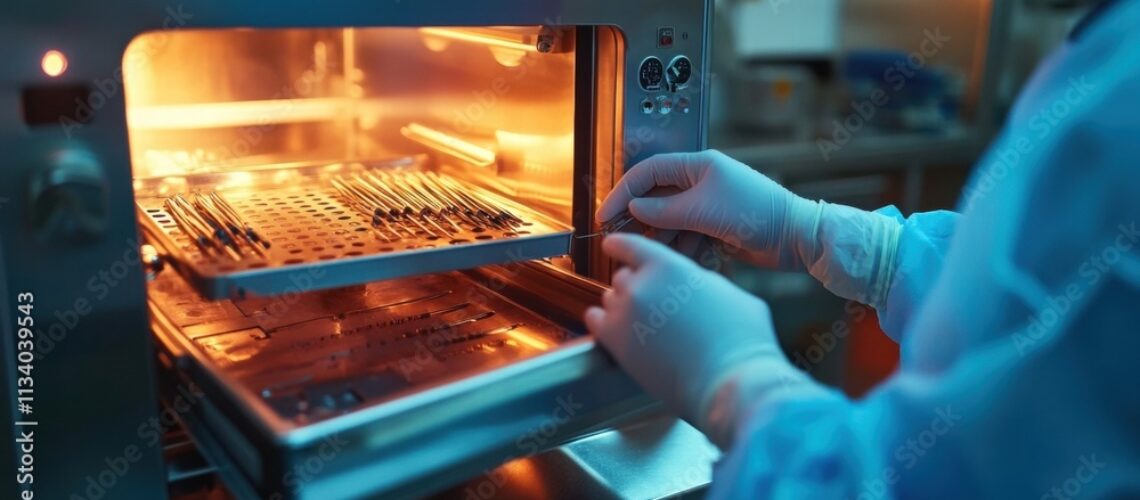Sterilization is a fundamental aspect of modern healthcare, ensuring that medical instruments, surfaces, and environments remain free from harmful pathogens. Traditional sterilization techniques, including autoclaving, chemical disinfectants, and radiation, have been effective but come with significant drawbacks such as damage to sensitive equipment, environmental hazards, and extended processing times.
Plasma sterilization is emerging as an advanced alternative, offering low-temperature, efficient, and environmentally friendly disinfection. Researchers, including Dr. Sergey Macheret, are exploring the applications of plasma technology in medical settings, paving the way for safer and more effective sterilization methods.
The Need for Improved Sterilization Methods
Medical facilities rely on strict sterilization protocols to prevent infection transmission and maintain patient safety. However, current sterilization techniques present several challenges:
- High-temperature autoclaving can degrade heat-sensitive materials such as plastics, optical lenses, and delicate surgical instruments.
- Chemical sterilants, including ethylene oxide and hydrogen peroxide, can leave toxic residues and require long aeration times to ensure safety.
- Radiation-based sterilization is effective but involves safety concerns related to exposure and the disposal of radioactive materials.
The limitations of these methods drive the search for an alternative that is both gentle on medical instruments and highly effective against pathogens. Plasma sterilization presents a promising solution by using ionized gas to destroy microorganisms without the damaging effects of traditional techniques.
What is Plasma Sterilization?
Plasma is often called the fourth state of matter, consisting of a mixture of ions, free electrons, and neutral gas molecules. It naturally occurs in phenomena such as lightning, auroras, and the sun’s outer atmosphere, but can also be generated in controlled laboratory settings.
In plasma sterilization, a low-temperature plasma is created by applying an electrical discharge to a gas, producing reactive species such as oxygen radicals, hydroxyl radicals, and ultraviolet (UV) photons. These highly reactive species:
- Disrupt the cellular membranes and genetic material of bacteria, viruses, and fungi.
- Break down biofilms and spore-forming microbes that are resistant to traditional disinfection methods.
- Operate at low temperatures, making plasma sterilization ideal for delicate medical instruments.
Because plasma sterilization leaves no toxic residues and produces only water vapor and oxygen as byproducts, it is a safer and more sustainable alternative to chemical-based sterilization.
Key Advantages of Plasma Sterilization
1. Low-Temperature Sterilization
Plasma sterilization operates at significantly lower temperatures than autoclaving, making it ideal for sterilizing heat-sensitive instruments such as endoscopes, catheters, and electronic medical devices. Unlike high-temperature methods, plasma sterilization preserves the structural integrity and function of medical tools.
2. Faster and More Efficient Sterilization
Plasma sterilization can complete a full cycle within minutes, compared to the longer processing times required by autoclaves and chemical sterilants. Faster sterilization cycles improve hospital efficiency by reducing downtime for critical instruments and allowing for quicker patient care.
3. Environmentally Friendly and Safe
Unlike chemical sterilants that leave harmful residues or require extensive aeration, plasma sterilization:
- Does not produce toxic waste or hazardous byproducts.
- Requires minimal ventilation, as the byproducts are mainly water vapor and oxygen.
- Reduces reliance on harmful chemicals, improving workplace safety for medical personnel.
4. Broad Sterilization Capability
Plasma sterilization is effective against a wide range of pathogens, including bacteria, viruses, spores, and fungi. Unlike traditional methods, which may struggle to eliminate antibiotic-resistant bacteria or biofilms, plasma’s reactive species penetrate and destroy even the most resilient microorganisms.
Challenges in Plasma Sterilization Technology
Despite its advantages, plasma sterilization faces several challenges that must be addressed before widespread adoption in medical settings.
1. High Initial Costs
Plasma sterilization systems require specialized equipment and infrastructure, making them more expensive than conventional autoclaves or chemical sterilizers. However, ongoing advancements in plasma technology are making these systems more affordable and scalable for hospitals and clinics.
2. Equipment Size and Portability
Most plasma sterilization units are large and designed for centralized hospital use, limiting their accessibility in smaller healthcare settings or field hospitals. Researchers, including Sergey Macheret, are working on portable plasma sterilization devices that could be used in emergency rooms, ambulances, and disaster relief efforts.
3. Regulatory and Approval Challenges
New medical sterilization technologies must undergo extensive testing and regulatory approval to ensure effectiveness, safety, and compliance with healthcare standards. As plasma sterilization continues to gain recognition, regulatory pathways are evolving to support its integration into mainstream medical sterilization protocols.
The Future of Plasma Sterilization in Healthcare
Plasma sterilization is at the forefront of medical technology advancements, with researchers focusing on:
- Developing compact and portable plasma systems for use in emergency response teams and remote clinics.
- Enhancing sterilization techniques for specialized medical instruments, such as robotic surgery tools and implantable devices.
- Integrating plasma sterilization with existing hospital workflows to optimize efficiency and reduce the reliance on chemical-based methods.
As plasma sterilization technology continues to evolve, it has the potential to redefine infection control practices in hospitals, surgical centers, and medical research facilities.
Conclusion
Plasma sterilization represents a breakthrough in medical sterilization technology, offering a low-temperature, efficient, and environmentally friendly alternative to traditional methods. By eliminating harmful pathogens while preserving delicate medical instruments, plasma technology enhances both patient safety and hospital efficiency.
Ongoing research and advancements are addressing cost, scalability, and regulatory challenges, making plasma sterilization more accessible to medical facilities worldwide. As healthcare systems seek safer and more sustainable sterilization solutions, plasma technology is set to play a crucial role in the future of infection control and patient care.

